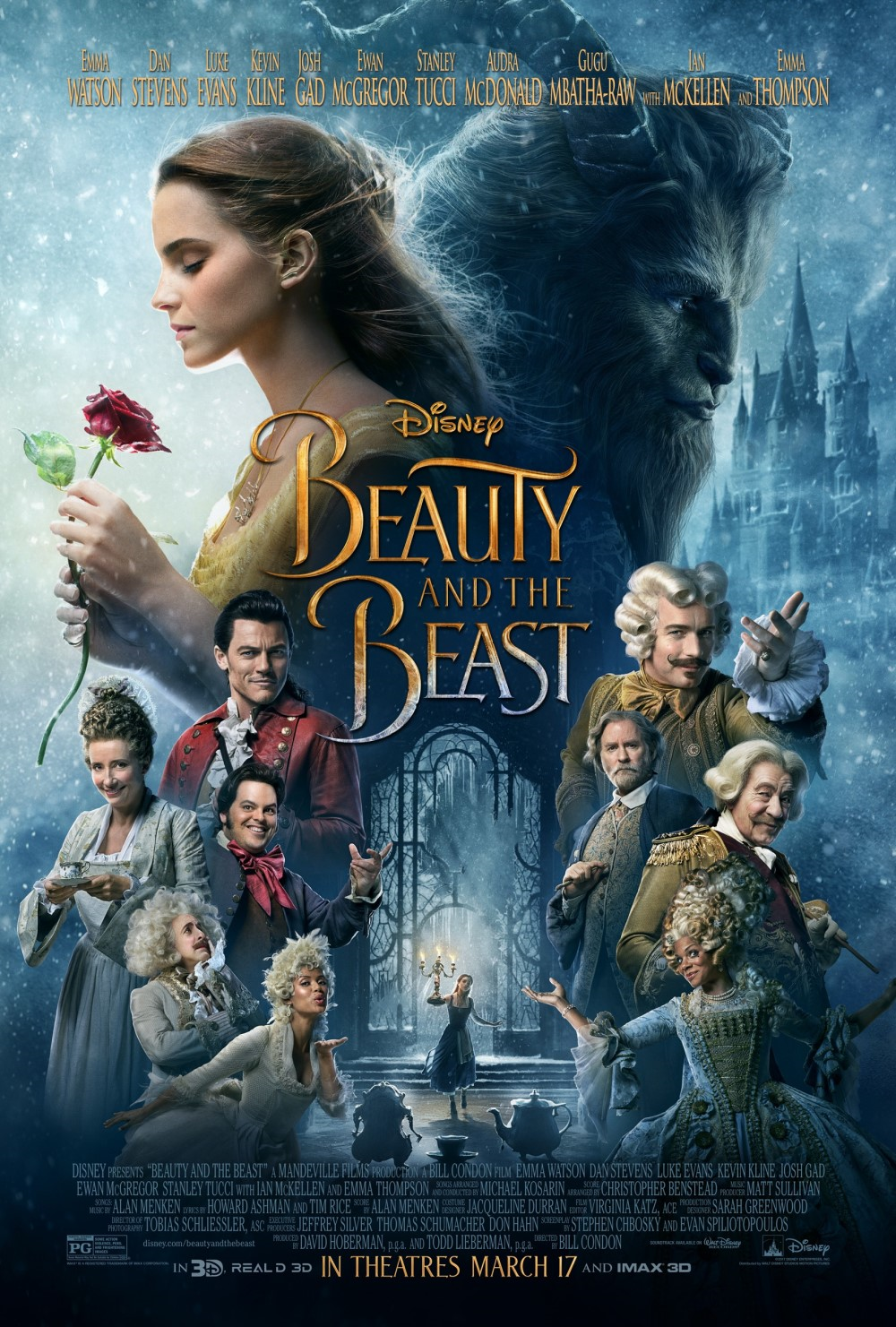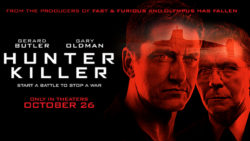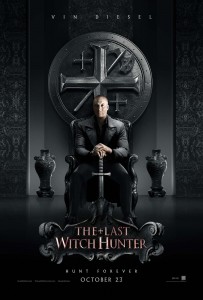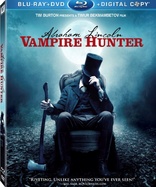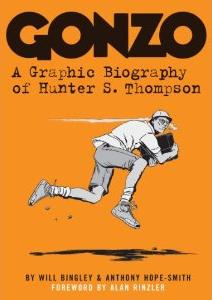Ralph Steadman is a British Gonzo artist that is best known for his work with American author Hunter S. Thompson, author of “Fear and Loathing in Las Vegas”. After meeting each other in 1970 to cover the Kentucky Derby, Steadman and Thompson formed a long-time relationship. Steadman’s did the artwork for Thompson’s books over his career. He is also an author himself having written numerous books focusing on his drawings…or as Hunter would have called it his “filthy scribblings”, according to Ralph. This April, “For No Good Reason” makes its U.S. debut in NYC, which is a documentary on Ralph’s career. Media Mikes had a chance to chat with Ralph about the film and his work with Hunter S. Thompson.
Mike Gencarelli: Tell us about how you got approached for the documentary “From No Good Reason”?
Ralph Steadman: The director Charlie Paul initially came down to see me, then the producer Lucy Paul. This was over a period of twelve years, you know. They would stay for lunch, we would talk and then we would carry on. So over twelve years, we made this film. It just seems so long ago from when we first started it. They got Johnny Depp involved, which was good because he has become a personal friend of mine over the years. He is such a great guy, easy going, warm, genuine and terrific fellow…
MG: I loved Johnny’s narration in the film as well, very nice touch.
RS: Oh yeah, it was lovely. I agree.
MG: How did you feel about having a documentary about your life done?
RS: I first thought “For God’s sake…why?” “For no good reason”…that is what Hunter would have said. I used to always ask “Why are we doing this Hunter?” and he would always say “For no good reason, Ralph” [laughs].
MG: How was it seeing some of your drawings brought to life and illustrated in the film?
RS: That was quite interesting. I couldn’t be an animator in old Disney way when they used to draw one picture and then other but slightly different and then you would put them together like a flip book and they would actually move. The only thing I liked like that was doing something simple like a dot or a splat and putting it in a book form and flipping it and watching it move, that to me was magic. I like doing that kind of thing. But seeing my drawings in the film was really great.
MG: I find it so interesting that you said in the film that your work is unprofessional and “it is as unexpected to me as it is to anyone else”; can you talk about this aspect?
RS: Yeah, that is because I don’t do any pencil work. I never plan anything. I just begin and the drawing becomes what it becomes. My reaction every time is “I don’t know how I did that”. I am always amazed. “How the fuck did I do that?”, I usually say. It’s like Ludwig Wittgenstein’s idea that only thing of value is that thing that you cannot say but you can see it. I like that a lot.
MG: So how did your splatter technique come about then?
RS: Oh that was clumsiness. I was clumsy. I said “Oh shit” when I flicked my wrist with my pen but I realized it made this beautiful sweep of blots. I thought to myself them “Oh I like that, it’s quite nice” So I started to use it more deliberately. I would spill ink all over the place. I liked the idea of putting a sheet of paper on the studio floor taking a bottle of ink high on a ladder and dropping it. Not all of it…but just enough. It would make terrific, radiating splatters of different designs. Then you look and think “Hmm, it could be a spider” and I would go from there.
MG: Looking back at the film now, how do you feel that it has come together?
RS: I was amazed by it actually. After twelve years, it was nice to see it all come together. They did cut out a few things that I would have liked them to keep in like my art teacher, Leslie Richardson. This was a pity since I really wanted him in it. What they were after was the notoriety including the fame of Johnny Depp. So poor Leslie Richardson, who is now 93, was left out. But he still goes around kicking old ladies and children in the streets [laughs].
MG: Tell us how you originally crossed paths with Hunter Thompson?
RS: When I was planning to come to New York in 1970, I had some friends that invited me to stay with them in the Hampton’s. They were soon to be married, so I felt a little uncomfortable saying with them for a long period of time. So after staying a little while, I was going to leave for the city and I was about to leave when there was a cal from a guy named J.C. Suarez. He was an editor from Brooklyn. He wanted me to come to Kentucky and meet an ex-Hells Angels, who just shaved his head. I asked why did he do that and he said “Why? Because he’s a Hells Angels. He is a rebel”. So I asked “What for?” He told me that he was not only looking for a photographer but for an artist and they saw my book of pictures called “Still Life with Raspberry”, which was my first book of collected drawings. Don Goddard was the foreign editor of The New York Times and he had found the book in England and then came back and said that they need to put me with Hunter Thompson. So that is how it happened.
MG: Do you feel that your career would have been different if your path’s didn’t cross?
RS: As far as I was concerned, meeting Hunter and going to Kentucky was a bulls eye for me. For all the people that I could meet in America, he would be the one…go figure. Meeting Hunter was the best thing for me in terms of making a career. What we did for journalism was that we became the story and that became know as gonzo journalism. That was really what was so good about it. One day, this guy Bill Cardoso told us that the Kentucky Derby piece we did was “pure gonzo”. Hunter never heard the word before and it really stuck. He used to say “Don’t do those filthy scribblings”. He used to call my drawings filthy scribblings [laughs]. He used to also tell me “Don’t write Ralph, you will bring shame on your family”. But he always loved to sort of go against you but on purpose because he would know that it would provoke me and my work would benefit.
MG: “Fear and Loathing in Las Vegas” is one of my favorite books and the movie is great as well…
RS: The thing is people get too sniffy about the movie and things like that. They say that it is not quite this or quite that. No! It is a version of the book. I didn’t mind it, especially since the whole damn thing, “Fear and Loathing in Las Vegas” was a crazy idea to begin with.
MG: Do you recall how long it took you to complete the illustrations for the “Fear and Loathing in Las Vegas” book?
RS: I think I did nine pictures in a week and it was done. The rotten thing was that I ended up selling all of the originals since I was told it would be a good career move. I think I got $75 dollars each for them. Can you imagine what they are worth now?
MG: Has your drawings been affected since the death of Hunter S. Thompson?
RS: No, not really. I have been doing bird drawings for the last few years. I don’t like drawing politicians any more, I can’t be bothered. They are so awful. I don’t feel so bitter about it. I do not feel like I am trying to change the world. I have changed the world enough since I started and it is worse now than when I started [laughs]. So good, I have done what I had meant to do [laughing]
MG: Yeah, you start off the film saying you set out to “change the world”; I was going to ask if you felt that you have accomplished that goal?
RS: We’ll you look around, I have done my part but bloody computers have changed everything.The business and also people in general. You can’t walk down a side street without somebody passing you by and they are not looking at you or around them, they are looking down at their phone. I had to go on a train recently to Halifax for a show of my drawings and there was this woman on the train that was a good example. She had red hair which was long down one side and shaved on the other side. I have a drawing of it in my book here. She was so awful, I had to draw her. But she had her makeup out in one hand and her phone in the other from the moment she got on the train. That is the problem about the invasion of the computer, like Twitter. Everyone wants to tweet you now. So that is very weird to me.
MG: Tell us about your latest book “Proud Too Be Weirrd”?
RS: I collected together a bunch of things that I never had no good reason to use [laughs]. I thought I would start with the first page and go through my studio finding this and finding that and just building the book from there and that is how I worked on it. This guy Steve Crist from AMMO Books got in touch with me about doing it. He used to work at TASCHEN. Benedikt Taschen rang me after the book was made and said he was actually very disappointed because he wanted to do the book, but at the time I didn’t know this. He did my book with Hunter, “The Curse of Lono”. Steve Crist used to work with Benedikt and that’s where he began. He sort of adopted the style of big book like TASCHEN did. I really like the title “Proud Too Be Weirrd” and it is a great book
MG: What are some of the artists that inspire you?
RS: I love Picasso. He is such an inspiration for me. There is a film called “The Mystery of Picasso” that is really worth seeing if you can get a copy. It is fascinating for me to watch him at work. The director, who made the film, was allowed to by Picasso to be in the studio with him. This is what Charlie did with me as well for our film. Picasso would set things up for him including painting on glass and having him film from the other side. This is amazing work and it really continues to inspire me.
MG: Are you working on anything else new currently?
RS: I got a new book of creatures that I am working on right now. These are completely made up creatures for example instead of a pelican; you do a pelicant [laughs]. You have to keep doing something otherwise what is the point. I guess I am taking advice from my father, who couldn’t bear to just sit about. I am also learning how to etch steel plates as well. So I suppose I should continue to carry on.
Related Content
